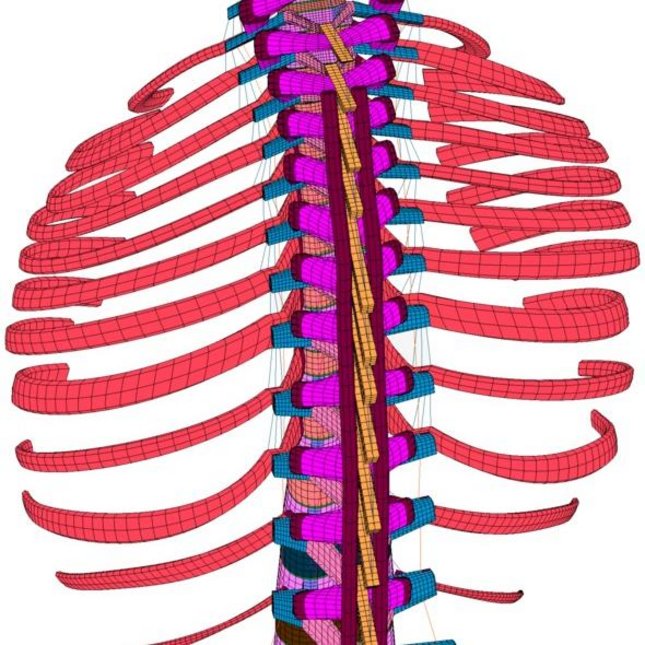
Early-onset scoliosis (EOS) is characterized by a complex deformity of the spine in children with onset before the age of 10 years due to congenital anomalies of the vertebral column, neuromuscular and syndromes, or idiopathic causes. Scoliosis patients with severe spinal deformities can be surgically treated to correct spine curvatures using metal rods and wires. Due to the fact that these children are still growing, several re-operations are required resulting in great patient discomfort and high costs. Recently, the use of UHMWPE to replace metal wires has been proposed for early-onset scoliosis patients, since they would enable sliding of the UHMWPE wires along the metal rods during treatment avoiding multiple surgeries. Because of the higher strength of UHMWPE wires, this new technique also enables to limit the number of instrumented spinal levels, potentially resulting in a less invasive and more effective patient-specific treatment. Developing a computer model is needed to optimize patient-specific treatment and predict the range of motion (ROM) depending on treatment parameters. The goal of the current study is to validate this parametrized FE model of the spine in the normal situation and after implementing the growth-guidance constructs for several levels of wire fixation, relative to available literature data. To reach this goal, first biomechanical behavior of the healthy L4‐L5 segment was calibrated in comparison to literature data. Next, global spine behavior was validated by relating ROM of multiple-level spine segments to experimental results from literature. Finally, spinal instrumentation, including rods, screws and wires, are implemented in the model (in silico) to compare the results with porcine biomechanical test data (in vitro).